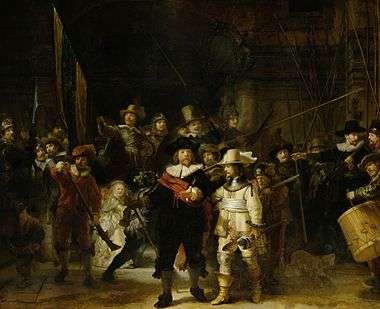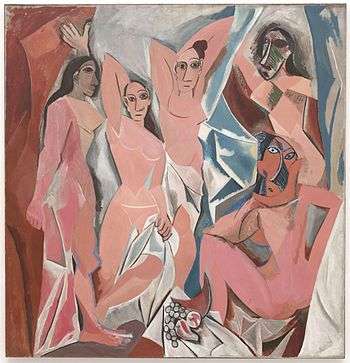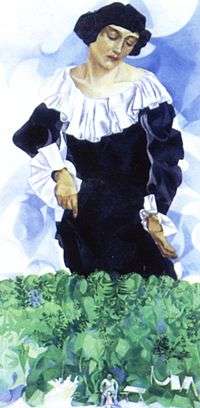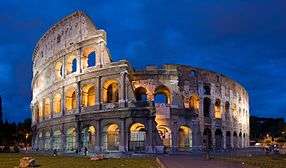Western culture
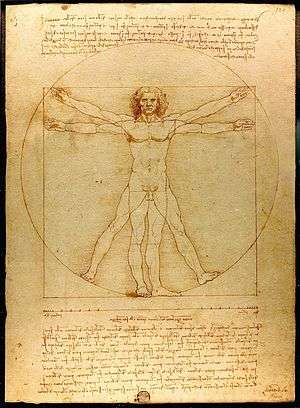

Western culture, sometimes equated with Western civilization, Western world, Western society or European civilization is a term used very broadly to refer to a heritage of social norms, ethical values, traditional customs, belief systems, political systems, and specific artifacts and technologies that have some origin or association with Europe. The term is applied to European countries and countries whose history is strongly marked by European immigration, colonisation, and influence, such as the continents of the Americas and Australasia, whose current demographic majority is of European ethnicity, and is not restricted to the continent of Europe.
Western culture is characterized by a host of artistic, philosophic, literary, and legal themes and traditions; the heritage of Greek, Roman, Jewish,[1] Celtic, Slavic, and other ethnic and linguistic groups,[2][3] as well as Christianity including the Roman Catholic Church,[4][5][6] and the Orthodox Church,[7][8] which played an important part in the shaping of Western civilization since at least the 4th century.[9][10][11][12][13] Before the Cold War era, the traditional Western viewpoint identified Western Civilization with the Western Christian (Catholic-Protestant) countries and culture.[14][15]
A cornerstone of Western thought, beginning in ancient Greece and continuing through the Middle Ages and Renaissance and into modern times, is a tradition of rationalism in various spheres of life, developed by Hellenistic philosophy, Scholasticism, humanism, the Scientific revolution and the Enlightenment. Values of Western culture have, throughout history, been derived from political thought, widespread employment of rational argument favouring freethought, assimilation of human rights, the need for equality, and democracy.
Ancient Greece is considered the birthplace of Western culture, with the world's first democratic system of government and major advances in philosophy, science and mathematics. Greece was followed by Rome, which made key contributions in law, government and engineering.[16] Western culture continued to develop with the Christianisation of Europe during the Middle Ages, the reform and modernization triggered by the Renaissance, and with globalization by successive European empires, that spread European ways of life and European educational methods around the world between the 16th and 20th centuries. European culture developed with a complex range of philosophy, medieval scholasticism and mysticism, and Christian and secular humanism.[17] Rational thinking developed through a long age of change and formation, with the experiments of the Enlightenment, and breakthroughs in the sciences. Tendencies that have come to define modern Western societies include the existence of political pluralism, prominent subcultures or countercultures (such as New Age movements), and increasing cultural syncretism resulting from globalization and human migration
Terminology
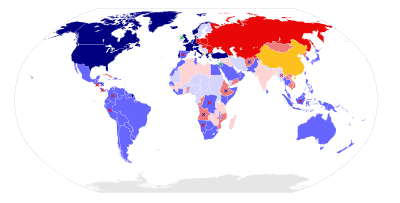

The West as a geographical area is unclear. There is some disagreement about what nations should or should not be included in the category, and at what times. Many parts of the Eastern Roman Empire are considered Western today, but were Eastern in the past. Geographically, the "West" of today would include Europe (especially the European Union countries) together with extraeuropean territories belonging to the Anglosphere, as well as the Hispanidad, the Lusosphere or the Francophonie in the wider context. Since the context is highly biased and context-dependent, there is no agreed definition what the "West" is.
It is difficult to determine which individuals fit into which category, and the East–West contrast is sometimes criticized as relativistic and arbitrary.[18][19][20] Globalism has spread Western ideas so widely that almost all modern cultures are, to some extent, influenced by aspects of Western culture. Stereotyped views of "the West" have been labelled Occidentalism, paralleling Orientalism—the term for the 19th-century stereotyped views of "the East".
As Europe discovered the wider world, old concepts adapted. The area that had formerly been considered the Orient ("the East") became the Near East, as the interests of the European powers interfered with Qing China and Meiji Japan for the first time, in the 19th century.[21] Thus, the Sino-Japanese War in 1894–1895 occurred in the Far East, while the troubles surrounding the decline of the Ottoman Empire simultaneously occurred in the Near East.[22] The term Middle East, in the mid-19th century, included the territory east of the Ottoman Empire, but West of China—Greater Persia and Greater India—is now used synonymously with "Near East" in most languages.
History
| History of Western philosophy |
|---|
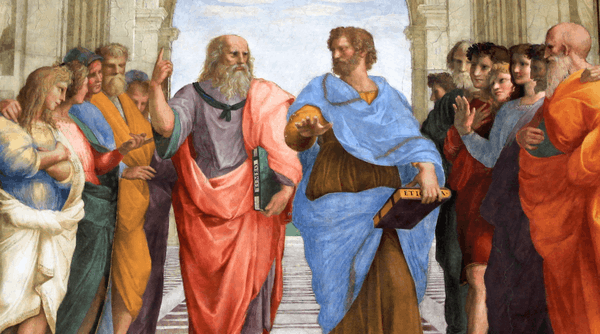 |
| Western philosophy |
|
|
| See also |

The earliest civilizations which influenced the development of western culture were those of Mesopotamia; the area of the Tigris–Euphrates river system, largely corresponding to modern-day Iraq, northeastern Syria, southeastern Turkey and southwestern Iran: the cradle of civilization.[23][24]
The Greeks contrasted themselves to their Eastern neighbors, such as the Trojans in Iliad, setting an example for later contrasts between east and west. In the Middle Ages, the Near East provided a contrast to the West, though it had been Hellenized since the time of Alexander the Great.
Concepts of what is the West arose out of legacies of the Western Roman Empire and the Eastern Roman Empire. Later, ideas of the west were formed by the concepts of Latin Christendom and the Holy Roman Empire. What we think of as Western thought today originates primarily from Greco-Roman and Germanic influences, and includes the ideals of the Middle Ages, the Renaissance and the Enlightenment, as well as Christian culture.
Western culture is neither homogeneous nor unchanging. As with all other cultures it has evolved and gradually changed over time. Nevertheless, it is possible to follow the evolution and history of the West, and appreciate its similarities and differences, its borrowings from, and contributions to, other cultures of humanity.
Classical West
In Homeric literature, and right up until the time of Alexander the Great, for example in the accounts of the Persian Wars of Greeks against Persians by Herodotus, we see the paradigm of a contrast between the West and East.
Nevertheless, the Greeks felt they were the most civilized and saw themselves (in the formulation of Aristotle) as something between the wild barbarians of most of Europe and the soft, slavish Middle-Easterners. Ancient Greek science, philosophy, democracy, architecture, literature, and art provided a foundation embraced and built upon by the Roman Empire as it swept up Europe, including the Hellenic World in its conquests in the 1st century BCE. In the meantime however, Greece, under Alexander, had become a capital of the East, and part of an empire. The Celts also created some significant literature in the ancient world whenever they were given the opportunity (an example being the poet Caecilius Statius). They also developed a large amount of scientific knowledge themselves, as seen in their Coligny Calendar.
For about five hundred years, the Roman Empire maintained the Greek East and consolidated a Latin West, but an East-West division remained, reflected in many cultural norms of the two areas, including language. Although Rome, like Greece, was no longer democratic, the idea of democracy remained a part of the education of citizens.
Eventually the empire became increasingly split into a Western and Eastern part, reviving old ideas of a contrast between an advanced East, and a rugged West. In the Roman world one could speak of three main directions; North (Celtic tribal states and Parthians), the East (lux ex oriente), and finally South, which implied danger, historically via the Punic wars (Quid novi ex Africa?). The West was peaceful—it contained only the Mediterranean.
In the time of Alexander the Great and then (the Hellenistic period) the Greek civilization came in contact with the Jewish civilization. The history of Hellenism and Judaism is a history of interaction between the two cultures that was most influential for the western civilisation.[25] Later the Christianity emerged from Judaism on the eastern shore of the Mediterranean, and both spread around the Roman world, with Christianity being the more popular religion. With the rise of Christianity, many of the Graeco-roman traditions and parts of this culture were reshaped by that religion, and transformed into something new, which would serve as the basis for the development of Western civilization after the fall of Rome. Also, Roman culture mixed with Celtic, Germanic and Slavic cultures, which slowly became integrated into Western culture starting, mainly, with their acceptance of Christianity.
Medieval West
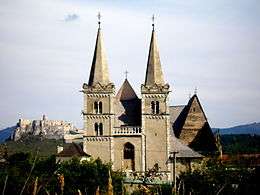
The Medieval West was at its broadest the same as Christendom,[15][26] including both the "Latin" West, also called "Frankish" during Charlemagne's reign, and the Orthodox Eastern part, where Greek remained the language of empire.
After the fall of Rome much of Greco-Roman art, literature, science and even technology were all but lost in the western part of the old empire. However, this would become the centre of a new West. Europe fell into political anarchy, with many warring kingdoms and principalities. Under the Frankish kings, it eventually, and partially, reunified, and the anarchy evolved into feudalism.
Much of the basis of the post-Roman cultural world had been set before the fall of the Empire, mainly through the integration and reshaping of Roman ideas through Christian thought. The Greek and Roman paganism had been completely replaced by Christianity around the 4th and 5th centuries, since it became the official State religion following the baptism of emperor Constantine I. Orthodox Christian Christianity and the Nicene Creed served as a unifying force in Christian parts of Europe, and in some respects replaced or competed with the secular authorities. Art and literature, law, education, and politics were preserved in the teachings of the Church, in an environment that, otherwise, would have probably seen their loss. The Church founded many cathedrals, universities, monasteries and seminaries, some of which continue to exist today.
In a broader sense, the Middle Ages, with its fertile encounter between Greek philosophical reasoning and Levantine monotheism was not confined to the West but also stretched into the old East. The philosophy and science of Classical Greece was largely forgotten in Europe after the collapse of the Western Roman Empire, other than in isolated monastic enclaves (notably in Ireland, which had become Christian but was never conquered by Rome).[27] The learning of Classical Antiquity was better preserved in the Byzantine Eastern Roman Empire. Justinian's Corpus Juris Civilis Roman civil law code was preserved in the East and Constantinople maintained trade and intermittent political control over outposts such as Venice in the West for centuries. Classical Greek learning was also subsumed, preserved and elaborated in the rising Eastern world, which gradually supplanted Roman-Byzantine control as a dominant cultural-political force. Thus, much of the learning of classical antiquity was slowly reintroduced to European civilisation in the centuries following the collapse of the Western Roman Empire.
The rediscovery of the Justinian Code in Western Europe early in the 10th century rekindled a passion for the discipline of law, which crossed many of the re-forming boundaries between East and West. In the Catholic or Frankish west, Roman law became the foundation on which all legal concepts and systems were based. Its influence is found in all Western legal systems, although in different manners and to different extents. The study of canon law, the legal system of the Catholic Church, fused with that of Roman law to form the basis of the refounding of Western legal scholarship. During the Reformation and Enlightenment, the ideas of civil rights, equality before the law, procedural justice, and democracy as the ideal form of society began to be institutionalized as principles forming the basis of modern Western culture, particularly in Protestant regions.
In the 14th century, starting from Italy and then spreading throughout Europe,[28] there was a massive artistic, architectural, scientific and philosophical revival, as a result of an increased interest for Classical antiquity. This period is commonly referred to as the Renaissance. In the following century, this process was further enhanced by an exodus of Greek Christian priests and scholars to Italian cities such as Venice after the end of the Byzantine Empire with the fall of Constantinople.
From Late Antiquity, through the Middle Ages, and onwards, while Eastern Europe was shaped by the Orthodox Church, Southern and Central Europe were increasingly stabilized by the Catholic Church which, as Roman imperial governance faded from view, was the only consistent force in Western Europe.[29] In 1054 came the so-called Great Schism that, following the Greek East and Latin West divide, separated Europe into religious and cultural regions present to this day. Until the Age of Enlightenment,[30] Christian culture took over as the predominant force in western civilization, guiding the course of philosophy, art, and science for many years.[29][31] Movements in art and philosophy, such as the Humanist movement of the Renaissance and the Scholastic movement of the High Middle Ages, were motivated by a drive to connect Catholicism with Greek and Arab thought imported by Christian pilgrims.[32][33][34] However, due to the division in Western Christianity caused by the Protestant Reformation and the Enlightenment, religious influence—especially the temporal power of the Pope—began to wane.[35][36]
From the late 15th century to the 17th century, Western culture began to spread to other parts of the world through explorers and missionaries during the Age of Discovery, and by imperialists from the 17th century to the early 20th century. During the Great Divergence, a term coined by Samuel Huntington[37] the Western world overcame pre-modern growth constraints and emerged during the 19th century as the most powerful and wealthy world civilization of the time, eclipsing Qing China, Mughal India, Tokugawa Japan, and the Ottoman Empire. The process was accompanied and reinforced by the Age of Discovery and continued into the modern period. Scholars have proposed a wide variety of theories to explain why the Great Divergence happened, including lack of government intervention, geography, colonialism, and customary traditions.
Modern era

Coming into the modern era, the historical understanding of the East-West contrast—as the opposition of Christendom to its geographical neighbors—began to weaken. As religion became less important, and Europeans came into increasing contact with far away peoples, the old concept of Western culture began a slow evolution towards what it is today. The Age of Discovery faded into the Age of Enlightenment of the 18th century, during which cultural and intellectual forces in Western Europe emphasized reason, analysis, and individualism rather than traditional lines of authority. It challenged the authority of institutions that were deeply rooted in society, such as the Catholic Church; there was much talk of ways to reform society with toleration, science and skepticism.
Philosophers of the Enlightenment included Francis Bacon, René Descartes, John Locke, Baruch Spinoza, Voltaire (1694–1778), David Hume, and Immanuel Kant.[38] influenced society by publishing widely read works. Upon learning about enlightened views, some rulers met with intellectuals and tried to apply their reforms, such as allowing for toleration, or accepting multiple religions, in what became known as enlightened absolutism. New ideas and beliefs spread around Europe and were fostered by an increase in literacy due to a departure from solely religious texts. Publications include Encyclopédie (1751–72) that was edited by Denis Diderot and Jean le Rond d'Alembert. The Dictionnaire philosophique (Philosophical Dictionary, 1764) and Letters on the English (1733) written by Voltaire spread the ideals of the Enlightenment.
Coinciding with the Age of Enlightenment was the scientific revolution, spearheaded by Newton. This included the emergence of modern science, during which developments in mathematics, physics, astronomy, biology (including human anatomy) and chemistry transformed views of society and nature.[39][40][41][42][43][44] While its dates are disputed, the publication in 1543 of Nicolaus Copernicus's De revolutionibus orbium coelestium (On the Revolutions of the Heavenly Spheres) is often cited as marking the beginning of the scientific revolution, and its completion is attributed to the "grand synthesis" of Newton's 1687 Principia.
The Industrial Revolution was the transition to new manufacturing processes in the period from about 1760 to sometime between 1820 and 1840. This included going from hand production methods to machines, new chemical manufacturing and iron production processes, improved efficiency of water power, the increasing use of steam power, and the development of machine tools.[45] These transitions began in Great Britain, and spread to Western Europe and North America within a few decades.[46]

The Industrial Revolution marks a major turning point in history; almost every aspect of daily life was influenced in some way. In particular, average income and population began to exhibit unprecedented sustained growth. Some economists say that the major impact of the Industrial Revolution was that the standard of living for the general population began to increase consistently for the first time in history, although others have said that it did not begin to meaningfully improve until the late 19th and 20th centuries.[48][49][50] The precise start and end of the Industrial Revolution is still debated among historians, as is the pace of economic and social changes.[51][52][53][54] GDP per capita was broadly stable before the Industrial Revolution and the emergence of the modern capitalist economy,[55] while the Industrial Revolution began an era of per-capita economic growth in capitalist economies.[56] Economic historians are in agreement that the onset of the Industrial Revolution is the most important event in the history of humanity since the domestication of animals, plants[57] and fire.
The First Industrial Revolution evolved into the Second Industrial Revolution in the transition years between 1840 and 1870, when technological and economic progress continued with the increasing adoption of steam transport (steam-powered railways, boats and ships), the large-scale manufacture of machine tools and the increasing use of machinery in steam-powered factories.[58][59][60]
Arts and humanities
Some cultural and artistic modalities are characteristically Western in origin and form. While dance, music, visual art, story-telling, and architecture are human universals, they are expressed in the West in certain characteristic ways.
In Western dance, music, plays and other arts, the performers are only very infrequently masked. There are essentially no taboos against depicting a god, or other religious figures, in a representational fashion.

Music
The symphony, concerto, sonata, opera and oratorio have their origins in Italy. Many important musical instruments used by cultures all over the world were also developed in the West; among them are the violin, piano, pipe organ, saxophone, trombone, clarinet, accordion, and the theremin. The solo piano, symphony orchestra and the string quartet are also important performing musical forms.
Many forms of popular music have been derived from African-Americans, and their innovations of jazz and blues serve as the basis from which much of modern popular music derives. Folklore and music during 19th and 20th centuries, initially by themselves, but later played and further developed together with White and Black Americans, British people, and Westerners in general. These include jazz, blues and rock music (that in a wider sense include the rock and roll and heavy metal genres), rhythm and blues, funk, Hip-Hop, techno as well as the ska and reggae genres from Jamaica. Several other related or derived styles were developed and introduced by Western pop culture such as pop, metal and dance music.
Painting and photography
Jan van Eyck, among other renaissance painters, made great advances in oil painting, and perspective drawings and paintings had their earliest practitioners in Florence.[61] In art, the Celtic knot is a very distinctive Western repeated motif. Depictions of the nude human male and female in photography, painting and sculpture are frequently considered to have special artistic merit. Realistic portraiture is especially valued.
Photography, and the motion picture as both a technology and basis for entirely new art forms, were also developed in the West.
-

Bacchus, by Caravaggio
-
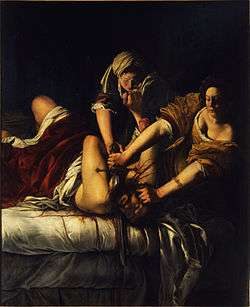
Judith Slaying Holofernes, by Artemisia Gentileschi
-
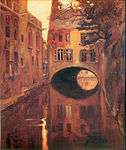
The House on the Bridge, by Diego Rivera
Dance and performing arts

The ballet is a distinctively Western form of performance dance.[62] The ballroom dance is an important Western variety of dance for the elite. The polka, the square dance, and the Irish step dance are very well known Western forms of folk dance.
The soap opera, a popular culture dramatic form, originated in the United States first on radio in the 1930s, then a couple of decades later on television. The music video was also developed in the West in the middle of the 20th century.
Literature
While epic literary works in verse such as the Mahabharata and Homer's Iliad are ancient and occurred worldwide, the prose novel as a distinct form of storytelling, with developed, consistent human characters and, typically, some connected overall plot (although both of these characteristics have sometimes been modified and played with in later times), was popularized by the West[63] in the 17th and 18th centuries. Of course extended prose fiction had existed much earlier; both novels of adventure and romance in the Hellenistic world and in Heian Japan. Both Petronius' Satyricon (ca 60 CE) and the Tale of Genji by Murasaki Shikibu (ca 1000 CE) have been cited as the world's first major novel but they had very limited long-term impact on literary writing beyond their own day until much more recent times.
Tragedy, from its ritually and mythologically inspired Greek origins to modern forms where struggle and downfall are often rooted in psychological or social, rather than mythical, motives, is also widely considered a specifically European creation, and can be seen as a forerunner of some aspects of both the novel and of classical opera.
-

Homer, Ancient Greek epic poet
-

Sappho, Ancient Greek poet
-

Xenophon, Ancient Greek writer and historian
-

Terence, Roman playwright
-
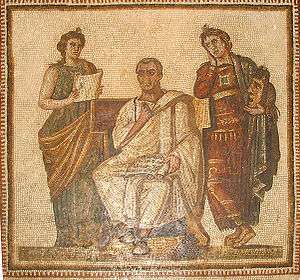
Virgil, Roman poet
-
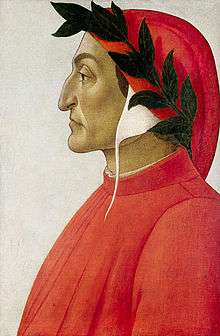
Dante Alighieri, Italian (Florentine) poet
-
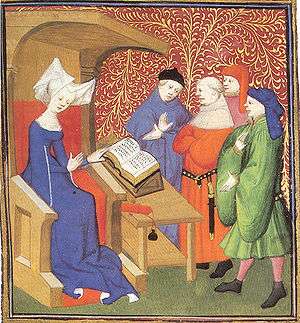
Christine de Pizan, French author
-

Miguel de Cervantes, Spanish playwright, poet and novelist
-

William Shakespeare, English poet and playwright
-

Joost van den Vondel, Dutch poet and playwright
-
_-_Google_Art_Project_(cropped).jpg)
Molière, French playwright and actor
-
_-001.jpg)
Voltaire, French writer, historian and philosopher
-
.jpg)
Goethe, German writer
-
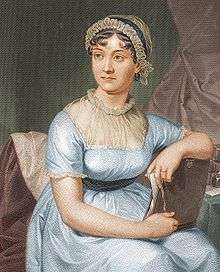
Jane Austen, English novelist
-
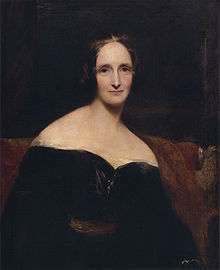
Mary Shelley, English novelist
-
.jpg)
Lord Byron, English poet
-

Adam Mickiewicz, Polish poet, dramatist, essayist and publicist
-

Victor Hugo, French poet and novelist
-
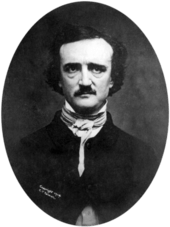
Edgar Allan Poe, American author, poet, editor and literary critic
-
.jpg)
Multatuli, Dutch writer
-
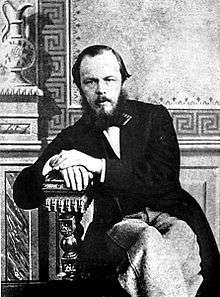
Fyodor Dostoyevsky, Russian writer
-
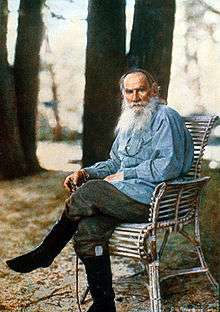
Leo Tolstoy, Russian writer
-
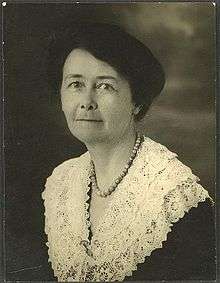
Miles Franklin, Australian writer and feminist
-
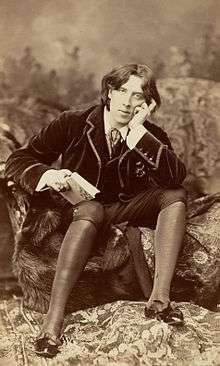
Oscar Wilde, Irish playwright and author
-
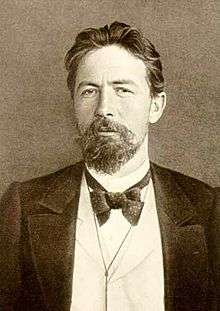
Anton Chekov, Russian playwright and writer
-

Virginia Woolf, English writer
-

Anna Akhmatova, Russian poet
-
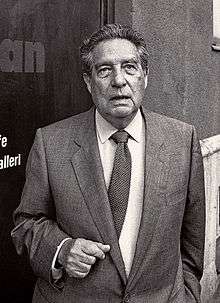
Octavio Paz, Mexican writer and poet
-
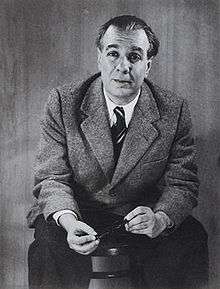
Jorge Luis Borges, Argentinian writer and poet
-

Pablo Neruda, Chilean poet
Architecture
Important Western architectural motifs include the Doric, Corinthian, and Ionic columns, and the Romanesque, Gothic, Baroque, and Victorian styles are still widely recognised, and used even today, in the West. Much of Western architecture emphasizes repetition of simple motifs, straight lines and expansive, undecorated planes. A modern ubiquitous architectural form that emphasizes this characteristic is the skyscraper, first developed in New York, London, and Chicago.
-

Aqueduct of Segovia in Segovia, Spain.
-
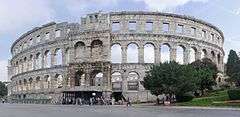
The Pula Arena in Pula, Croatia.
-

The Neuschwanstein Castle in Schwangau, Germany.
-
.jpg)
The Hagia Sophia in Istanbul, Turkey.
-

Saint Sophia Cathedral in Kiev, Ukraine.
-
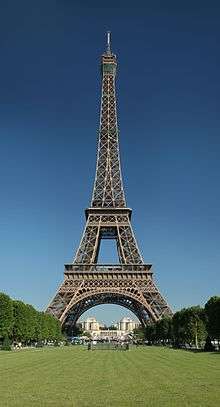
The Eiffel Tower in Paris, France.
-
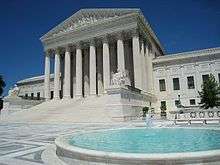
The U.S. Supreme Court Building in Washington, D.C., United States.
-
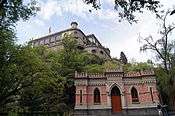
The Chapultepec Castle in Mexico City, Mexico.
-

The Winter Palace in St Petersburg, Russia.
-
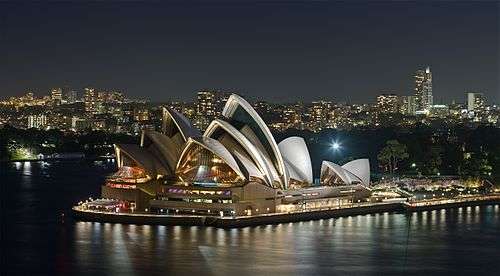
The Sydney Opera House in Sydney, Australia.
-
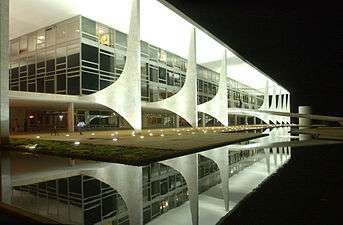
The Palacio do Planalto in Brasilia, Brazil.
-
Rietveld Schröder House in Utrecht, Netherlands.
Scientific and technological inventions and discoveries
A notable feature of Western culture is its strong emphasis and focus on innovation and invention through science and technology, and its ability to generate new processes, materials and material artifacts with its roots dating back to the Ancient Greeks.
The Western World has been the leading force in the technological and scientific disciplines: for example 97 percent of all scientific discoveries occurred in Europe and North America. Britain, France, Germany and Italy alone account for 72 percent of all the significant figures in science from 1400-1950. Add in Russia and the Netherlands, and 80 percent of all significant figures are accounted for.[64] Futhermore 79% of the world's most important inventions were either British or American.[65]
It was the West that first developed steam power and adapted its use into factories, and for the generation of electrical power. The electrical motor, dynamo, transformer, and electric light, and indeed most of the familiar electrical appliances, were inventions of the West. The Otto and the Diesel internal combustion engines are products whose genesis and early development were in the West. Nuclear power stations are derived from the first atomic pile constructed in Chicago in 1942.
Communication devices and systems including the telegraph, the telephone, radio, television, communication and navigation satellites, mobile phone, and the Internet were all invented by Westerners. The pencil, ballpoint pen, CRT, LCD, LED, camera, photocopier, laser printer, ink jet printer, plasma display screen and world wide web were also invented in the West.
Ubiquitous materials including concrete, aluminium, clear glass, synthetic rubber, synthetic diamond and the plastics polyethylene, polypropylene, PVC and polystyrene were invented in the West. Iron and steel ships, bridges and skyscrapers first appeared in the West. Nitrogen fixation and petrochemicals were invented by Westerners. Most of the elements, were discovered and named in the West, as well as the contemporary atomic theories to explain them.
The transistor, integrated circuit, memory chip, and computer were all first seen in the West. The ship's chronometer, the screw propeller, the locomotive, bicycle, automobile, and aeroplane were all invented in the West. Eyeglasses, the telescope, the microscope and electron microscope, all the varieties of chromatography, protein and DNA sequencing, computerised tomography, NMR, x-rays, and light, ultraviolet and infrared spectroscopy, were all first developed and applied in Western laboratories, hospitals and factories.
In medicine, the pure antibiotics were created in the West. The method of preventing Rh disease, the treatment of diabetes, and the germ theory of disease were discovered by Westerners. The eradication of smallpox, was led by a Westerner, Donald Henderson. Radiography, Computed tomography, Positron emission tomography and Medical ultrasonography are important diagnostic tools developed in the West. Other important diagnostic tools of clinical chemistry including the methods of spectrophotometry, electrophoresis and immunoassay were first devised by Westerners. So were the stethoscope, electrocardiograph, and the endoscope. Vitamins, hormonal contraception, hormones, insulin, Beta blockers and ACE inhibitors, along with a host of other medically proven drugs were first utilized to treat disease in the West. The double-blind study and evidence-based medicine are critical scientific techniques widely used in the West for medical purposes.
In mathematics, calculus, statistics, logic, vectors, tensors and complex analysis, group theory and topology were developed by Westerners. In biology, evolution, chromosomes, DNA, genetics and the methods of molecular biology are creatures of the West. In physics, the science of mechanics and quantum mechanics, relativity, thermodynamics, and statistical mechanics were all developed by Westerners. The discoveries and inventions by Westerners in electromagnetism include Coulomb's law (1785), the first battery (1800), the unity of electricity and magnetism (1820), Biot–Savart law (1820), Ohm's Law (1827), and the Maxwell's equations (1871). The atom, nucleus, electron, neutron and proton were all unveiled by Westerners.
In business, economics, and finance, double entry bookkeeping, credit card, and the charge card were all first used in the West.
Westerners are also known for their explorations of the globe and outer space. The first expedition to circumnavigate the Earth (1522) was by Westerners, as well as the first journey to the South Pole (1911), and the first moon landing (1969). The landing of robots on Mars (2004 and 2012) and on an asteroid (2001), the Voyager explorations of the outer planets (Uranus in 1986 and Neptune in 1989), Voyager 1's passage into interstellar space (2013), and New Horizon's flyby of Pluto (2015) were significant recent Western achievements.
Media

|
Very serious situation
Difficult situation
Noticeable problems |
Satisfactory situation
Good situation
Not classified / No data |
The Western media refers to the news media of the Western world. It is mainly characterized by the freedom of the press,[67] and has gradually expanded into developing countries.[68] In recent years, many Western media outlets have seen their circulation figures stagnate.[69] Despite the slowing of its growth, the mainstream Western media continues to be perceived as a fair, independent and objective medium of news reporting.[70]
The roots of the Western media can be traced back to the late 15th century, when printing presses began to operate throughout Western Europe. The emergence of news media in the 17th century has to be seen in close connection with the spread of the printing press, from which the publishing press derives its name.[71]
The western media has gradually expanded into developing countries,[68] with significant news coverage focused on various human rights issues in Africa, America, Asia, Europe and Oceania. In authoritarian regimes, exposure to Western media is generally considered to be a measure of political openness.[72]
Religion

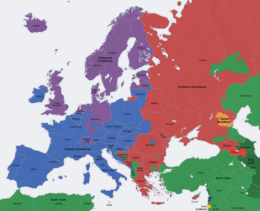
The native religions of Europe were polytheistic but not homogenous—however they were similar insofar as they were predominantly Indo-European in origin. Roman religion was similar to but not the same as Hellenic religion—likewise the same for indigenous Germanic polytheism, Celtic polytheism and Slavic polytheism. Western culture, for at least the last 1000 years, has been considered nearly synonymous with Christian culture.[73] Before this time many Europeans from the north, especially Scandinavians, remained polytheistic, though southern Europe was predominantly Christian from the 5th century onwards.
Western culture, throughout most of its history, has been nearly equivalent to Christian culture, and many of the population of the Western hemisphere could broadly be described as cultural Christians. The notion of "Europe" and the "Western World" has been intimately connected with the concept of "Christianity and Christendom" many even attribute Christianity for being the link that created a unified European identity.[15]
As in other areas, Judaism is found in the Western world. Minority groups, and Jews in particular, often had to contend with discrimination and persecution. This could include being subjected to violence and/or destruction of property (this may be referred to as a pogrom) as well as being expelled or banned from various polities, hoping to find havens in other places.
Religion has waned considerably in Europe, where many are today irreligious, agnostic or atheist and they make up about 18% of the European population.[74] In terms of irreligion, over half of the populations of the Czech Republic (79% of the population was agnostic, atheist or irreligious), the United Kingdom (~25%),[75] Germany (25-33%),[76] France (30–35%)[77][78][79] and the Netherlands (39–44%) are agnostic, atheist, or otherwise non-religious.
However, per another survey by Pew Research Center from 2011, Christianity remains the dominant religion in the Western world where 70–84% are Christians,[80] According to this survey, 76% of Europeans described themselves as Christians,[80][81][82] and about 86% of the Americas population consider themselves Christians,[83] (90% in Latin America and 77% in North America).[84] And 73% in Oceania are self-identify as Christian, and 76% in South Africa is Christian and 90% in Philippines.[80]
Throughout the Western world there are increasing numbers of people who seek to revive the indigenous religions of their European ancestors, such groups include Germanic, Roman, Hellenic, Celtic and Slavic, polytheistic reconstructionist movements, likewise, Wicca, new age spirituality and other neo-pagan belief systems enjoy notable minority support in Western nations.
Sport


Since classical antiquity, sport has been an important facet of Western cultural expression. A wide range of sports were already established by the time of Ancient Greece and the military culture and the development of sports in Greece influenced one another considerably. Sports became such a prominent part of their culture that the Greeks created the Olympic Games, which in ancient times were held every four years in a small village in the Peloponnesus called Olympia. Baron Pierre de Coubertin, a Frenchman, instigated the modern revival of the Olympic movement. The first modern Olympics were held at Athens in 1896.
The Romans built immense structures such as the Colisseum in Rome to house their festivals of sport. The Romans exhibited a passion for blood sports, such as the infamous Gladiatorial battles that pitted contestants against one another in a fight to the death. The Olympic Games revived many of the sports of Classical Antiquity—such as Greco-Roman wrestling, discus and javelin. The sport of bullfighting is a traditional spectacle of Spain, Portugal, southern France, and some Latin American countries. It traces its roots to prehistoric bull worship and sacrifice and is often linked to Rome, where many human-versus-animal events were held. Bullfighting spread from Spain to its Central and South American colonies, and in the 19th century to France, where it developed into a distinctive form in its own right.
Jousting and hunting were popular sports in the Western Europe of the Middle Ages, and the aristocratic classes of Europe developed passions for leisure activities. A great number of the popular global sports were first developed or codified in Europe. The modern game of golf originated in Scotland, where the first written record of golf is James II's banning of the game in 1457, as an unwelcome distraction to learning archery. The Industrial Revolution that began in Britain in the 18th Century brought increased leisure time, leading to more time for citizens to attend and follow spectator sports, greater participation in athletic activities, and increased accessibility. These trends continued with the advent of mass media and global communication. The bat and ball sport of cricket was first played in England during the 16th century and was exported around the globe via the British Empire. A number of popular modern sports were devised or codified in Britain during the 19th Century and obtained global prominence—these include Ping Pong, modern tennis, Association Football, Netball and Rugby.
Football (also known as soccer) remains hugely popular in Europe, but has grown from its origins to be known as the world game. Similarly, sports such as cricket, rugby, and netball were exported around the world, particularly among countries in the Commonwealth of Nations, thus India and Australia are among the strongest cricketing nations, while victory in the Rugby World Cup has been shared among the Western nations of New Zealand, Australia, South Africa and England.
Australian Rules Football, an Australian variation of football with similarities to Gaelic football and rugby evolved in the British colony of Victoria in the mid-19th century. The United States also developed unique variations of English sports. English migrants took antecedents of baseball to America during the colonial period. The history of American football can be traced to early versions of rugby football and association football. Many games known as "football" were being played at colleges and universities in the United States in the first half of the 19th century American football resulted from several major divergences from rugby, most notably the rule changes instituted by Walter Camp, the "Father of American Football". Basketball was invented in 1891 by James Naismith, a Canadian physical education instructor working in Springfield, Massachusetts in the United States. From these American origins, basketball has become one of the great international participation sports.
Professionalism in sport in the West became prevalent during the 20th Century, further adding to the increase in sport's popularity, as sports fans began following the exploits of professional athletes through radio, television, and the internet—all while enjoying the exercise and competition associated with amateur participation in sports.
Themes and traditions
Western culture has developed many themes and traditions, the most significant of which are:
- Greco-Roman classic letters, arts, architecture, philosophical and cultural tradition, which include the influence of preeminent authors and philosophers such as Socrates, Plato, Aristotle, Homer, Virgil, and Cicero, as well as a long mythologic tradition.
- Judeo-Christian ethical, philosophical, and mythological tradition, the Jewish and Christian Bible
- Monasteries, schools, libraries, books, book making, universities, teaching, education, and lecture halls.
- A tradition of the importance of the rule of law.
- Secular humanism, rationalism and Enlightenment thought. This set the basis for a new critical attitude and open questioning of religion, favouring freethinking and questioning of the church as an authority, which resulted in open-minded and reformist ideals inside, such as liberation theology, which partly adopted these currents, and secular and political tendencies such as laicism, agnosticism and atheism.
- Generalized usage of some form of the Latin or Greek alphabet. The latter includes the standard cases of Greece and other derived forms, such as Cyrillic, the case of those southern and eastern Slavic countries of Christian Orthodox tradition, historically under the Byzantine and later Russian czarist or Soviet area of influence. Other variants of it are encountered for Gothic and Coptic alphabets, that historically substituted older scripts, such as Runic, and Demotic or Hieroglyphic systems.
- Natural law, human rights, constitutionalism, parliamentarism (or presidentialism) and formal liberal democracy in recent times—prior to the 19th century, most Western governments were still monarchies.
- A large influence, in modern times, of many of the ideals and values developed and inherited from Romanticism.
- An emphasis on, and use of, science as a method to understand the natural world and humanity's place in it.
See also
- Classical tradition
- Culture during the Cold War
- Eastern world
- European diaspora
- Christendom
- Western religion
- Western world
- Westernization
References
Notes
- ↑ Role of Judaism in Western culture and civilization, "Judaism has played a significant role in the development of Western culture because of its unique relationship with Christianity, the dominant religious force in the West". Judaism at Encyclopedia Britannica
- ↑ Kim Ann Zimmermann, 2012, "What is Culture? Definition of Culture," LiveScience, July 9, 2012, see , accessed on 8 December 2014.
- ↑ Anon. (Western Culture Global), 2009, "Western Culture Knowledge Center: What is Western Culture?," see , accessed on 8 December 2014.
- ↑ J. Spielvogel, Jackson (2016). Western Civilization: A Brief History, Volume I: To 1715 (Cengage Learning ed.). p. 156. ISBN 9781305633476.
- ↑ Neill, Thomas Patrick (1957). Readings in the History of Western Civilization, Volume 2 (Newman Press ed.). p. 224.
- ↑ O'Collins, Gerald; Farrugia, Maria (2003). Catholicism: The Story of Catholic Christianity (Oxford University Press ed.). p. v (preface). ISBN 978-0-19-925995-3.
- ↑ H. McNeill, William (2010). History of Western Civilization: A Handbook (University of Chicago Press ed.). p. 204. ISBN 0226561623.
- ↑ Faltin, Lucia; Melanie J. Wright (2007). The Religious Roots of Contemporary European Identity (A&C Black ed.). p. 83. ISBN 9780826494825.
- ↑ Roman Catholicism, "Roman Catholicism, Christian church that has been the decisive spiritual force in the history of Western civilization". Encyclopedia Britannica
- ↑ Caltron J.H Hayas, Christianity and Western Civilization (1953),Stanford University Press, p. 2: That certain distinctive features of our Western civilization—the civilization of western Europe and of America—have been shaped chiefly by Judaeo – Graeco – Christianity, Catholic and Protestant.
- ↑ Jose Orlandis, 1993, "A Short History of the Catholic Church," 2nd edn. (Michael Adams, Trans.), Dublin:Four Courts Press, ISBN 1851821252, preface, see , accessed 8 December 2014. p. (preface)
- ↑ Thomas E. Woods and Antonio Canizares, 2012, "How the Catholic Church Built Western Civilization," Reprint edn., Washington, D.C.: Regnery History, ISBN 1596983280, PG. NOS., see accessed 8 December 2014. p. 1: "Western civilization owes far more to Catholic Church than most people—Catholic included—often realize. The Church in fact built Western civilization."
- ↑ Marvin Perry (1 January 2012). Western Civilization: A Brief History, Volume I: To 1789. Cengage Learning. pp. 33–. ISBN 1-111-83720-1.
- ↑ Toynbee, Arnold (1947). A Study of History: Abridgement of, Volumes 1-6 (Oxford University Press ed.). p. 155. ISBN 9780199826698.
- 1 2 3 Dawson, Christopher; Glenn Olsen (1961). Crisis in Western Education (reprint ed.). p. 108. ISBN 9780813216836.
- ↑ Jonathan Daly (19 December 2013). The Rise of Western Power: A Comparative History of Western Civilization. A&C Black. pp. 7–9. ISBN 978-1-4411-1851-6.
- ↑ Sailen Debnath, 2010, "Secularism: Western and Indian," New Delhi, India:Atlantic Publishers & Distributors, ISBN 8126913665, PG. NOS.
- ↑ Yin Cheong Cheng, New Paradigm for Re-engineering Education. p. 369
- ↑ Ainslie Thomas Embree, Carol Gluck, Asia in Western and World History: A Guide for Teaching. p. xvi
- ↑ Kwang-Sae Lee, East and West: Fusion of Horizons
- ↑ Davidson, Roderic H. (1960). "Where is the Middle East?". Foreign Affairs. 38 (4): 665–75. doi:10.2307/20029452. JSTOR 20029452.
- ↑ British archaeologist D.G. Hogarth published The Nearer East in 1902, which helped to define the term and its extent, including Albania, Montenegro, southern Serbia and Bulgaria, Greece, Egypt, all Ottoman lands, the entire Arabian Peninsula, and Western parts of Iran.
- ↑ Jacobus Bronowski; The Ascent of Man; Angus & Robertson, 1973 ISBN 0-563-17064-6
- ↑ Geoffrey Blainey; A Very Short History of the World; Penguin Books, 2004
- ↑ Gordon, Cyrus H., The Common Background of the Greek and Hebrew Civilasations, W. W. Norton and Company, New York 1965
- ↑ Koch, Carl (1994). The Catholic Church: Journey, Wisdom, and Mission. The Age of Enlightenment: St. Mary's Press. ISBN 978-0-88489-298-4.
- ↑ "How The Irish Saved Civilisation", by Thomas Cahill, 1995
- ↑ Burke, P., The European Renaissance: Centre and Peripheries (1998)
- 1 2 Koch, Carl (1994). The Catholic Church: Journey, Wisdom, and Mission. Early Middle Ages: St. Mary's Press. ISBN 9780884892984.
- ↑ Koch, Carl (1994). "The Age of Enlightenment". The Catholic Church: Journey, Wisdom, and Mission. St. Mary's Press. ISBN 9780884892984.
- ↑ Dawson, Christopher; Glenn Olsen (1961). Crisis in Western Education (reprint ed.). ISBN 9780813216836.
- ↑ Koch, Carl (1994). "High Middle Ages". The Catholic Church: Journey, Wisdom, and Mission. St. Mary's Press. ISBN 9780884892984.
- ↑ Koch, Carl (1994). "Renaissance". The Catholic Church: Journey, Wisdom, and Mission. St. Mary's Press. ISBN 9780884892984.
- ↑ Dawson, Christopher; Glenn Olsen (1961). Crisis in Western Education (reprint ed.). p. 25. ISBN 9780813216836.
- ↑ Koch, Carl (1994). "Reformation". The Catholic Church: Journey, Wisdom, and Mission. St. Mary's Press. ISBN 9780884892984.
- ↑ Koch, Carl (1994). "Enlightenment". The Catholic Church: Journey, Wisdom, and Mission. St. Mary's Press. ISBN 9780884892984.
- ↑ Frank 2001.
- ↑ Sootin, Harry. "Isaac Newton." New York, Messner(1955)
- ↑ Galileo Galilei, Two New Sciences, trans. Stillman Drake, (Madison: Univ. of Wisconsin Pr., 1974), pp. 217, 225, 296–97.
- ↑ Ernest A. Moody (1951). "Galileo and Avempace: The Dynamics of the Leaning Tower Experiment (I)". Journal of the History of Ideas. 12 (2): 163–93. doi:10.2307/2707514. JSTOR 2707514.
- ↑ Marshall Clagett, The Science of Mechanics in the Middle Ages, (Madison, Univ. of Wisconsin Pr., 1961), pp. 218–19, 252–55, 346, 409–16, 547, 576–78, 673–82; Anneliese Maier, "Galileo and the Scholastic Theory of Impetus," pp. 103–23 in On the Threshold of Exact Science: Selected Writings of Anneliese Maier on Late Medieval Natural Philosophy, (Philadelphia: Univ. of Pennsylvania Pr., 1982).
- ↑ Hannam, p. 342
- ↑ E. Grant, The Foundations of Modern Science in the Middle Ages: Their Religious, Institutional, and Intellectual Contexts, (Cambridge: Cambridge Univ. Pr., 1996), pp. 29–30, 42–47.
- ↑ "Scientific Revolution" in Encarta. 2007.
- ↑ Landes 1969, p. 40
- ↑ Landes 1969
- ↑ Watt steam engine File: located in the lobby of into the Superior Technical School of Industrial Engineers of the UPM (Madrid)
- ↑ Lucas, Robert E., Jr. (2002). Lectures on Economic Growth. Cambridge: Harvard University Press. pp. 109–10. ISBN 978-0-674-01601-9.
- ↑ Feinstein, Charles (September 1998). "Pessimism Perpetuated: Real Wages and the Standard of Living in Britain during and after the Industrial Revolution". Journal of Economic History. 58 (3): 625–58. doi:10.1017/s0022050700021100. Retrieved 6 May 2014.
- ↑ Szreter & Mooney; Mooney (February 1998). "Urbanization, Mortality, and the Standard of Living Debate: New Estimates of the Expectation of Life at Birth in Nineteenth-Century British Cities". The Economic History Review. 51 (1): 104. doi:10.1111/1468-0289.00084. Retrieved 6 May 2014.
- ↑ Eric Hobsbawm, The Age of Revolution: Europe 1789–1848, Weidenfeld & Nicolson Ltd., p. 27 ISBN 0-349-10484-0
- ↑ Joseph E Inikori. Africans and the Industrial Revolution in England, Cambridge University Press. ISBN 0-521-01079-9 Read it
- ↑ Berg, Maxine; Hudson, Pat (1992). "Rehabilitating the Industrial Revolution". The Economic History Review. The Economic History Review, Vol. 45, No. 1. 45 (1): 24–50. doi:10.2307/2598327. JSTOR 2598327.
- ↑ Rehabilitating the Industrial Revolution by Julie Lorenzen, Central Michigan University. Retrieved November 2006.
- ↑ Robert Lucas, Jr. (2003). "The Industrial Revolution". Federal Reserve Bank of Minneapolis. Retrieved 14 November 2007.
it is fairly clear that up to 1800 or maybe 1750, no society had experienced sustained growth in per capita income. (Eighteenth century population growth also averaged one-third of 1 percent, the same as production growth.) That is, up to about two centuries ago, per capita incomes in all societies were stagnated at around $400 to $800 per year.
- ↑ Lucas, Robert (2003). "The Industrial Revolution Past and Future".
[consider] annual growth rates of 2.4 percent for the first 60 years of the 20th century, of 1 percent for the entire 19th century, of one-third of 1 percent for the 18th century
- ↑ McCloskey, Deidre (2004). "Review of The Cambridge Economic History of Modern Britain (edited by Roderick Floud and Paul Johnson), Times Higher Education Supplement, 15 January 2004".
- ↑ Taylor, George Rogers. The Transportation Revolution, 1815–1860. ISBN 978-0-87332-101-3. No name is given to the transition years. The "Transportation Revolution" began with improved roads in the late 18th century.
- ↑ Roe, Joseph Wickham (1916), English and American Tool Builders, New Haven, Connecticut: Yale University Press, LCCN 16011753. Reprinted by McGraw-Hill, New York and London, 1926 (LCCN 27-24075); and by Lindsay Publications, Inc., Bradley, Illinois, (ISBN 978-0-917914-73-7).
- ↑ Hunter 1985
- ↑ Barzun, p. 73
- ↑ Barzun, p. 329
- ↑ Barzun, p. 380
- ↑ Charles Murra, Human Accomplishment: The Pursuit of Excellence in the Arts and Sciences, 800 B.C. to 1950,Paperback – November 9, 2004, p. 296
- ↑ Charles Murra, Human Accomplishment: The Pursuit of Excellence in the Arts and Sciences, 800 B.C. to 1950,Paperback – November 9, 2004, p. 252
- ↑ "Press Freedom Index 2014", Reporters Without Borders, 11 May 2014
- ↑ "'Without free flow of information, there can be no serious democracy'". The Hindu. July 10, 2013. Retrieved 12 December 2013.
- 1 2 Chadha, K.; Kavoori, A. (1 July 2000). "Media imperialism revisited: some findings from the Asian case". Media, Culture & Society. 22 (4): 415–32. doi:10.1177/016344300022004003.
- ↑ Simone Pieranni. "Western Media In Crisis, But What About China?". European Journalism Observatory. Retrieved 12 December 2013.
- ↑ Mark MacKinnon. "As Western media contract, the China Daily expands". The Globe and Mail. Retrieved 13 December 2013.
state mouthpieces are in ascendance at precisely the time the Western media, with its traditions of independence and objectivity, is in deepening crisis.
- ↑ Weber, Johannes (2006), "Strassburg, 1605: The Origins of the Newspaper in Europe", German History, 24 (3): 387–412 (387), doi:10.1191/0266355406gh380oa:
At the same time, then as the printing press in the physical technological sense was invented, 'the press' in the extended sense of the word also entered the historical stage. The phenomenon of publishing was now born.
- ↑ Vatikiotis, Michael R. J. (1996). Political change in Southeast Asia trimming the banyan tree. London: Routledge. p. 90. ISBN 0203975162.
- ↑ Dawson, Christopher; Glenn Olsen (1961). Crisis in Western Education (reprint ed.). p. 108. ISBN 9780813216836.
- ↑ "Religiously Unaffiliated". Pewforum.org. 2012-12-18. Retrieved 2014-01-31.
- ↑ Census 2011 religion data reveal there are 4m fewer Christians and 1 in 4 is now an atheist | Mail Online. Dailymail.co.uk (2012-12-13). Retrieved on 2013-07-19.
- ↑ "Germany". State.gov. Retrieved 2014-01-31.
- ↑ Views on globalisation and faith. Ipsos MORI, 5 July 2011.
- ↑ (French) Catholicisme et protestantisme en France: Analyses sociologiques et données de l'Institut CSA pour La Croix – Groupe CSA TMO for La Croix, 2001
- ↑ "International Religious Freedom Report 2007". Retrieved 2011-02-08.
- 1 2 3 ANALYSIS (2011-12-19). "Global Christianity". Pewforum.org. Retrieved 2012-08-17.
- ↑ "Europe". Pewforum.org. 2011-12-19. Retrieved 2014-01-31.
- ↑ "Christians". Pewforum.org. 2012-12-18. Retrieved 2014-01-31.
- ↑ ANALYSIS (2011-12-19). "Americas". Pewforum.org. Retrieved 2012-08-17.
- ↑ ANALYSIS (2011-12-19). "Global religious landscape: Christians". Pewforum.org. Retrieved 2012-08-17.
Further reading
- Ankerl, Guy (2000). Global communication without universal civilization. INU societal research. Vol. 1: Coexisting contemporary civilizations: Arabo-Muslim, Bharati, Chinese, and Western. Geneva: INU Press. ISBN 2-88155-004-5
- Barzun, Jacques From Dawn to Decadence: 500 Years of Western Cultural Life 1500 to the Present HarperCollins (2000) ISBN 0-06-017586-9.
- Daly, Jonathan. "The Rise of Western Power: A Comparative History of Western Civilization" (London and New York: Bloomsbury, 2014). ISBN 978-1441161314.
- Daly, Jonathan. "Historians Debate the Rise of the West" (London and New York: Routledge, 2015). ISBN 978-1138774810.
- Jones, Prudence and Pennick, Nigel A History of Pagan Europe Barnes & Noble (1995) ISBN 0-7607-1210-7.
- Merriman, John Modern Europe: From the Renaissance to the Present W. W. Norton (1996) ISBN 0-393-96885-5.
- Derry, T. K. and Williams, Trevor I. A Short History of Technology: From the Earliest Times to A.D. 1900 Dover (1960) ISBN 0-486-27472-1.
- Eduardo Duran, Bonnie Dyran Native American Postcolonial Psychology 1995 Albany: State University of New York Press ISBN 0-7914-2353-0
- McClellan, James E. III and Dorn, Harold Science and Technology in World History Johns Hopkins University Press (1999) ISBN 0-8018-5869-0
- Stein, Ralph The Great Inventions Playboy Press (1976) ISBN 0-87223-444-4.
- Asimov, Isaac Asimov's Biographical Encyclopedia of Science and Technology: The Lives & Achievements of 1510 Great Scientists from Ancient Times to the Present Revised second edition, Doubleday (1982) ISBN 0-385-17771-2.
- Pastor, Ludwig von, History of the Popes from the Close of the Middle Ages; Drawn from the Secret Archives of the Vatican and other original sources, 40 vols. St. Louis, B. Herder (1898ff.)
- Walsh, James Joseph, The Popes and Science; the History of the Papal Relations to Science During the Middle Ages and Down to Our Own Time, Fordam University Press, 1908, reprinted 2003, Kessinger Publishing. ISBN 0-7661-3646-9 Reviews: P.462
- Ankerl, Guy (2000). Coexisting Civilizations: Arabo-Muslim, Bharati, Chinese, and Western. INUPRESS, Geneva, 119–244. ISBN 2-88155-004-5
- Atle Hesmyr (2013). Civilization, Oikos, and Progress ISBN 978-1468924190
- Hanson, Victor Davis; Heath, John (2001). Who Killed Homer: The Demise of Classical Education and the Recovery of Greek Wisdom, Encounter Books
- Stearns, P.N. (2003). Western Civilization in World History, Routledge, New York
- Thornton, Bruce (2002). Greek Ways: How the Greeks Created Western Civilization, Encounter Books
External links
| Wikimedia Commons has media related to Western culture. |
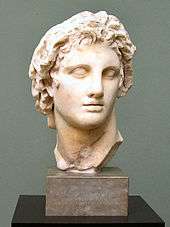

.jpg)


